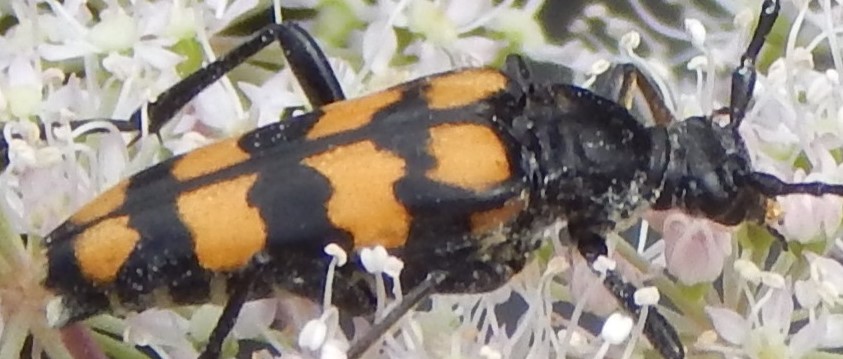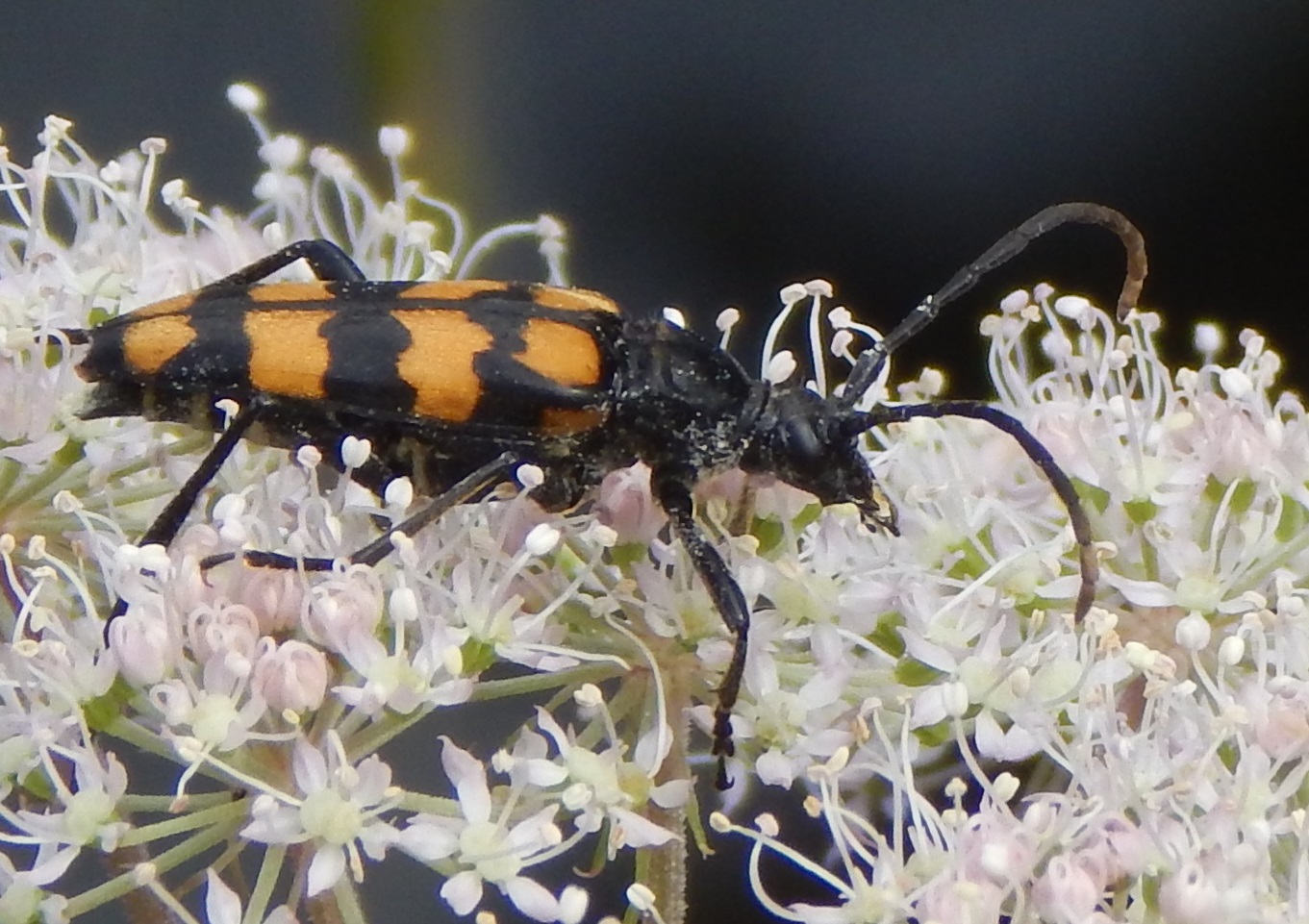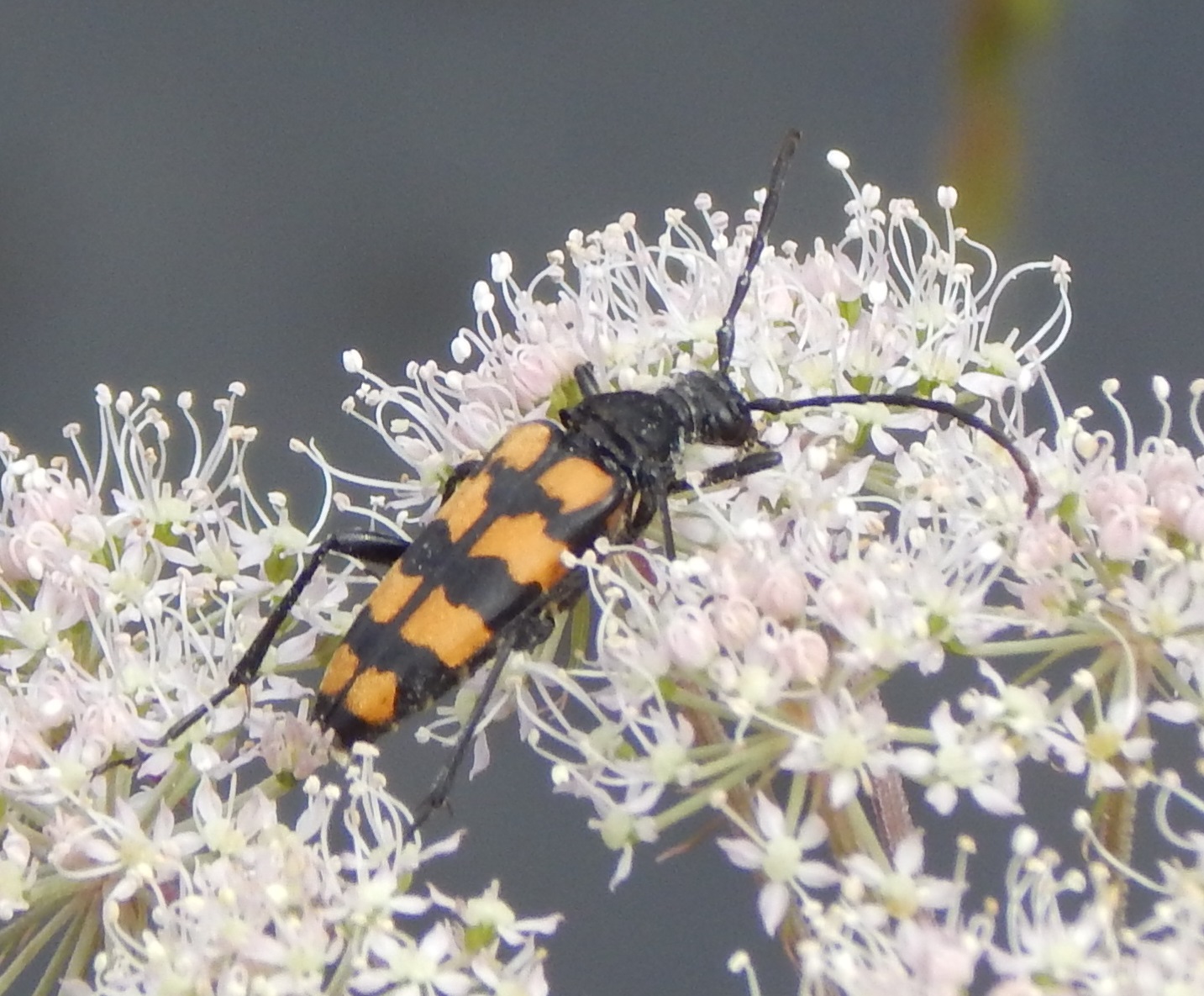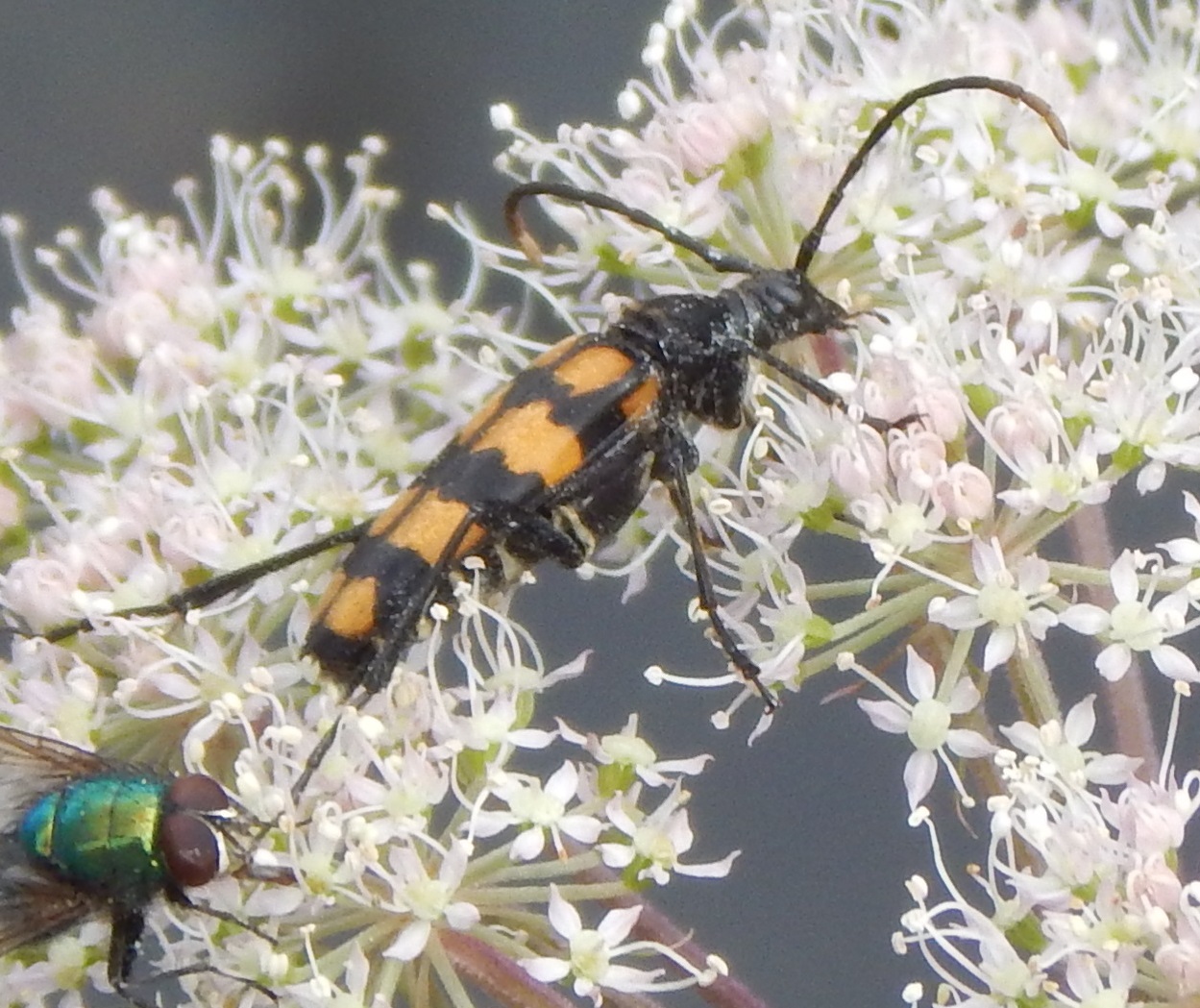[203] Leptura quadrifasciata, a Longhorn Beeetle

Introduction
Leptura quadrifasciata is another Longhorn Beetle, closely related to [188] Pachytodes cerambyciformis (Judolia cerambyciformis)
Taxonomy
Kingdom – Animals
Phylum – Arthropods
Class – Insects
Order – Coleoptera (Beetles)
Suborder – Polyphaga
Infraorder – Cucujiformia (Most plant eating beetles)
Clade – Phytophaga (Cerambycoidae and Weevils)
Superfamily – Cerambycoidea (Cerambycidae, Flower Beetles and a few others)
Family – Cerambycidae (Long-horned Beetles)
Subfamily – Lepturinae (Flower Longhorns)
Tribe – Lepturini
Genus – Leptura
Scientific Name – Leptura quadrifasciata
Name
Like many beetles this species does not have a common name. When insects are called long-horned it generally means that the antennae are relatively long.
In Ancient Greek mythology the shepherd Cerambus was transformed into a large beetle with horns. He has given his name to the type species Cerambyx and hence to the whole family of long-horned beetles.
Leptura, from Greek Roots, means thin-tailed. Quadrifasciata is modern Latin meaning four-banded.
Description
There are about 30 000 species in the family Cerambycidae. Almost all have very long antennae, longer than the rest of the body.
Leptura quadrifasciata is a medium sized beetle, about a centimetre long with antennae not quite so long as other Longhorns. The elytra have four bright orange-yellow bands. The rest of the body is all black.



Larvae of this beetle feed on many species of deciduous and coniferous trees, including [017] Alder, [051] Birch, [142] Beech, [266] Spruce, [291-2] Oak, [307] Willow and [308] Elder. Their life cycle is two or three years.
Habitat
Leptura quadrifasciata is common over Northern and Central Eurasia.
See also
I have unashamedly copied much of this post from [188] another Longhorn Beetle, which is very closely related.
